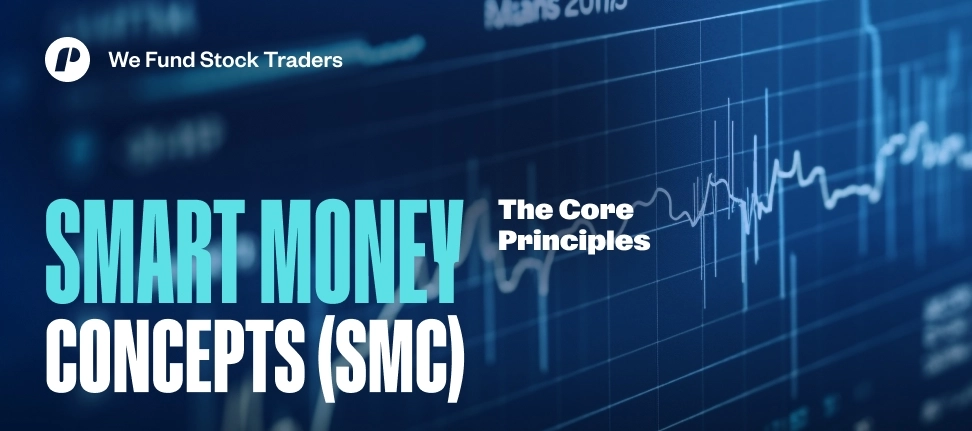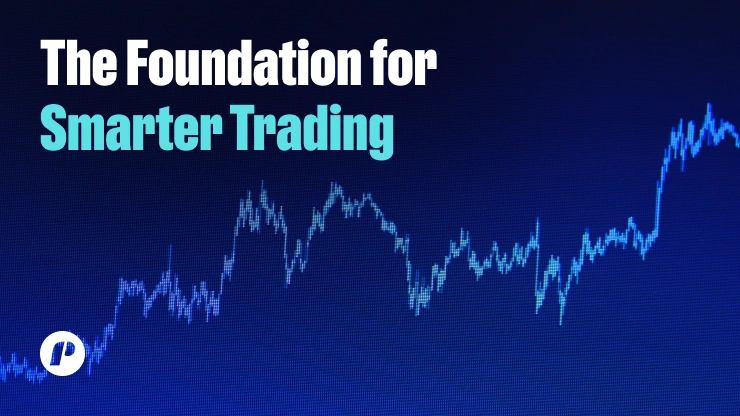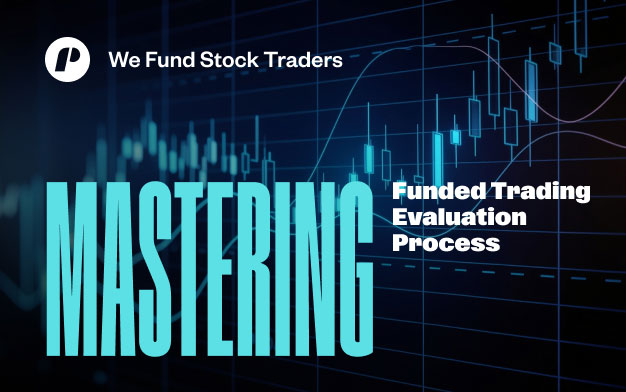
Have you ever wondered what truly moves financial markets? It is not individual retail traders. Instead, massive shifts often come from powerful institutional players. These entities wield vast capital and superior information. Consequently, they are known as “smart money.” What are the Smart Money Concepts (SMC)? In essence, it is an advanced price-action trading framework. This SMC framework decodes the hidden actions of these large institutional investors. Decoding these actions allows traders to identify their footprints. Moreover, it helps you align with these influential market movers. Recognizing their operations provides critical market insights. Indeed, these insights enhance your SMC trading strategy. Many aspiring traders achieve this mastery through dedicated study and reputable trader development programs. Ultimately, this guide introduces SMC’s fundamental principles. It sets the stage for mastering institutional trading.
Key Notes
-
- Smart Money Concepts – Defining the Big Players
- Core Philosophy of Smart Money Concepts
- Fundamental Elements
- The Foundation for Smarter Trading
What Exactly is “Smart Money”? Defining the Big Players
Every trader wants an advantage in the fast-paced world of finance. They’re always searching for the right information to boost their earnings. However, this quest often leads through complex market concepts. For beginners seeking to trade with little capital, therefore, understanding market drivers becomes even more critical for identifying opportunities. A key question often comes up: What exactly does “smart money” mean? Simply put, “smart money” refers to the massive institutional funds that truly move the financial markets. Crucially, this institutional capital is not collective retail trading. Instead, it represents highly informed, strategically deployed funds. These belong to sophisticated entities with vast resources and information advantages. Identifying their activity offers a profound advantage. Furthermore, it helps traders understand proper market direction. This knowledge can unlock new possibilities for financial profits. Thus, by tracking smart money, you gain an edge.
You move beyond guessing market intentions. Rather, analyzing their deliberate actions shifts your trading perspective.
Who Is Considered Smart Money and Why They Matter
Identifying who is considered smart money reveals the market’s true power brokers. For example, this influential group includes major investment banks, global hedge funds, and even sovereign wealth funds. Consider giants like Goldman Sachs or BlackRock. These entities deploy immense capital. Moreover, they use sophisticated strategies and advanced technology. Their trades are large enough to influence prices. Often, they position themselves before major market shifts. This powerful foresight is a key distinction. Consequently, it sets them apart from “dumb money.” What is smart money vs “dumb money”? In short, “dumb money” refers to the typical retail investor. These individuals often react to news too late. Furthermore, they trade on emotion or outdated information. As a result, they may buy at market tops. They usually sell at market bottoms. Smart money, conversely, capitalizes on these very movements. They strategically enter when retail traders panic-sell. They exit when retail traders eagerly buy.
Ultimately, understanding these dynamics is crucial. It illuminates how institutions generate their substantial returns.

Why is it Called “Smart Money Concepts”? The Rationale Behind the Name
Have you ever pondered the origin of the term “smart money”? Indeed, why is it called smart money? Essentially, the name stems from their inherent advantages. These institutions possess superior information, immense capital, and unmatched execution capabilities. Therefore, they operate with a distinct edge over the average retail trader. Their unmatched access to market intelligence enables them to utilize exclusive data feeds and conduct in-depth market research. Additionally, complex algorithms often drive their trading choices.
Furthermore, direct market access enables swift and large-volume placement of orders. This level of infrastructure enables highly strategic movements. Their actions reflect a deep understanding of market dynamics. Such capabilities, consequently, justify the “smart” label.
Smart Money’s Direct Market Impact
Their sheer capital volume directly impacts price. Specifically, large institutional orders dictate market direction. They can absorb massive blocks of shares or contracts. This absorption often occurs without significantly affecting the price at their entry point. Conversely, their strategic exits can shift trends. This concentrated market influence is undeniable. Therefore, “smart money” is not merely a label. Rather, it reflects a tangible reality. It highlights their smart money rationale and their power to shape financial landscapes.
The Core Philosophy of Smart Money Concepts (SMC)
Understanding Smart Money Concepts goes beyond merely identifying powerful market players. Instead, it involves embracing a fundamental shift in your trading mindset. This philosophy centers on recognizing how institutional forces shape price action and learning to trade in harmony with their flow.
Aligning Your Strategy with Institutional Flow
The fundamental principle of Smart Money Concepts is simple yet profound. Indeed, its core goal is to align your trading strategy with the movements of large institutional players. Retail traders often attempt to fight against these powerful forces. SMC, however, teaches you to ride their coattails. Forget trying to predict every market twist. Instead, focus on understanding where the substantial capital is moving. This shift in perspective is paramount. It transitions you from reacting to external news to interpreting genuine market intentions. Consequently, by aligning with smart money, you place yourself on the side of market power. This approach significantly minimizes risk compared to trading against the dominant flow. It is about intelligence and calculated patience, not fighting an uphill battle in the markets.
Decoding Institutional Footprints
Once aligned with the smart money mindset, the next step involves learning their language. Crucially, institutions leave clear “footprints” on price charts. These are not random movements. Instead, they are visible clues of their vast order flow and strategic positioning. Look for rapid and decisive price movements. These often indicate large blocks of capital entering or exiting the market. Furthermore, specific candlestick patterns can also signal their presence. Imbalances in supply and demand, quickly created and then revisited, serve as further evidence. These market actions are accurate indicators of institutional activity. Therefore, learning to read these institutional footprints allows traders to anticipate potential continuations or reversals. It provides insight into the invisible hand guiding prices.
Smart Money Concepts (SMC): Not a Secret, But a Strategy
Many newcomers ask, “What is the secret of the smart money concept?” The truth is, there’s no hidden magic or secret formula. SMC is not about insider tips or exclusive information. Instead, it’s a strategic framework built on careful observation and analytical skill. It involves understanding how large institutional orders influence observable price action. Moreover, this analysis reveals patterns that traditional retail indicators often miss. The “secret” lies in diligent study and disciplined application. Essentially, it is about interpreting market behavior through an institutional lens. Interpreting market behavior through an institutional lens enables traders to make informed decisions based on genuine supply and demand dynamics, rather than speculation or guesswork.
The Strategic Edge of the SMC Philosophy
Embracing the core philosophy of Smart Money Concepts provides a distinct strategic edge. It transforms a reactive trading approach into a proactive, analytical one. By focusing on aligning with smart money and deciphering their institutional footprints, traders gain clarity and insight into their strategies. They move beyond conflicting indicators and noisy chart patterns. This disciplined analysis fosters confidence in decision-making. It aims to put you on the side of liquidity, where the big moves originate. The SMC philosophy promotes patience and precision. It helps traders avoid common retail traps. Ultimately, understanding this core mindset is crucial for developing robust, higher-probability trading strategies in any market.

Fundamental Elements of Smart Money Activity
Understanding how smart money operates is key to deciphering market movements. These large institutions engage in specific “activities” that leave clear signals on price charts. It’s not just about their sheer size; it’s about the deliberate, strategic way they enter and exit positions. Recognizing these fundamental elements enables substantial traders to identify where smart money deploys significant capital. This section offers a high-level overview of what constitutes smart money activity. We’ll explore the tangible ways these major players leave their mark, providing crucial clues for those looking to align their trading with the market’s proper drivers. This insight helps answer how to identify smart money in real-time trading.
Price Displacement: The Forceful Move
One of the clearest indicators of smart money activity is significant price displacement. Significant price displacement refers to rapid, powerful movements that often occur with little resistance. Imagine a market suddenly surging or plummeting, covering a substantial range in a very short time. Such rapid, powerful movements aren’t usually the work of individual retail traders; they’re the signature of large institutional orders overwhelming supply or demand. These forceful moves create imbalances in the market, leaving behind clear “footprints” for the astute observer. Such displacement signals conviction from the smart money, indicating their strong directional bias and intent to move prices to a new area.
Volume Spikes: Confirming Conviction
Alongside price displacement, volume spikes serve as a critical confirming signal for smart money activity. While price shows the direction, volume reveals the conviction behind that move. A sudden, massive increase in trading volume, particularly during periods of significant price displacement, strongly suggests extensive institutional participation. Smart money needs to execute enormous orders. They often do this by patiently accumulating or distributing positions, but when they need to make a directional statement, volume explodes. Recognizing these synchronized price and volume events is a vital step in understanding how to identify smart money. It confirms the presence of substantial capital entering or exiting the market.
Order Blocks: Zones of Interest
Another fundamental element signaling smart money activity is the formation of Order Blocks. Traders define these as specific price areas on a chart where institutions executed large orders. They typically appear as the last bearish candlestick before a strong impulsive bullish move, or the last bullish candlestick before a powerful bearish move. Price often returns to these Order Blocks later to “rebalance” or fill remaining orders from institutions. These zones act as magnets for price, representing areas where smart money has left a clear footprint, indicating their original point of entry or significant activity.
Fair Value Gaps (FVG) / Imbalances: Market Inefficiencies
Smart money activity also creates Fair Value Gaps (FVG), often referred to as market imbalances. These are “gaps” in price action where buying or selling occurred so rapidly that candlesticks don’t entirely overlap. Such rapid, non-overlapping price action indicates an inefficiency or a market vacuum where institutional orders quickly consume liquidity. Traders often see such gaps as areas where price is likely to return to ‘fill’ or ‘rebalance’ before continuing its original move. Identifying these imbalances provides crucial insights into where smart money initiated forceful moves and where they might re-engage the market.
Liquidity Pools: The Fuel of Market Moves
At the heart of smart money activity lies liquidity. Liquidity refers to areas in the market where a concentration of buy or sell orders exists, often in the form of stop-losses or pending orders. Obvious highs or lows on a chart, for example, typically represent significant liquidity pools. Smart money doesn’t just move prices; it needs to fill its enormous orders. They often do this by “sweeping” these liquidity pools, triggering retail stops to generate the necessary counterpart orders for their prominent positions. Recognizing these liquidity sweeps is paramount. It enables traders to anticipate potential market reversals or strong impulses, as institutions utilize these areas to drive their desired price movements.
Market Structure: Understanding the Trend’s Flow
Understanding market structure is another crucial element in identifying the true intentions of informed investors, also known as smart money. Understanding market structure involves observing how price creates a series of higher highs and higher lows in an uptrend, or lower highs and lower lows in a downtrend. Smart money often manipulates prices around these structural points. Key concepts include a “Break of Structure” (BOS), where price clearly surpasses a previous high or low, indicating trend continuation. A “Change of Character” (ChoCH), however, signals a more significant shift. A ‘Change of Character’ (ChoCH) occurs when the market establishes an opposing market structure, suggesting a potential trend reversal. Analyzing these structural shifts helps traders align with the dominant institutional direction or anticipate a change in sentiment.
Points of Interest (POI): Pinpointing Entry Zones
After identifying order blocks, fair value gaps, and liquidity, traders use Points of Interest (POI) to pinpoint precise entry zones. A POI is a refined area on the chart where smart money is highly likely to re-engage with the market. It’s often derived from a strong order block or an unfilled fair value gap located within a significant liquidity sweep.POIs represent areas where institutions initially placed orders. Traders expect prices to return to ‘fill’ or ‘mitigate’ those remaining orders before continuing their intended move. Understanding how to identify these zones precisely is crucial. It allows traders to anticipate high-probability reversal or continuation points, aligning entries with institutional intentions.
Inducement: Trapping Retail Liquidity
Inducement is a clever and often subtle tactic employed by smart money to generate liquidity. It involves luring retail traders into a position just before the price moves in the opposite direction, thereby triggering their stop-losses. Think of it as a small, seemingly compelling price move against the proper institutional direction. This move “induces” retail traders to enter, believing they’ve found a good entry or a breakout. Once the market gathers enough retail liquidity (stop-loss orders), smart money reverses the price, sweeping those stops and fueling their large orders. Recognizing inducement helps traders avoid being trapped and instead use these fake moves as confirmation of genuine institutional interest.
Premium & Discount Arrays: Valuing Price Zones
Smart money operates with a clear value proposition that Premium and Discount Arrays reflect. These concepts divide a trading range into zones where smart money prefers to buy or sell. A Discount Array represents the lower portion of a price range (typically below the 50% mark). A Discount Array is where institutions prefer to accumulate long positions, as they are buying at a perceived ‘discount.’ Conversely, a Premium Array is the upper portion of a price range (above the 50% mark). Here, smart money looks to distribute or take short positions, selling at a “premium.” Understanding these arrays helps traders identify optimal entry and exit points that align with institutional value considerations.

Conclusion: The Foundation for Smarter Trading
This guide has laid the essential groundwork for understanding Smart Money Concepts. We’ve seen that SMC is not about complex indicators. Instead, it offers a powerful framework for deciphering true market dynamics. It shifts focus from retail noise to the strategic actions of institutional giants. The core purpose of SMC is clear: to align your trading with the flow of smart money, identifying their critical footprints. This foundational knowledge empowers you to look beyond surface-level price action. Now that you grasp these fundamental principles and elements, the path to mastering institutional trading lies ahead. Ready to transform your market approach? Explore our in-depth guides and resources to further your journey into Smart Money Concepts.
If you liked this post make sure to share it!







